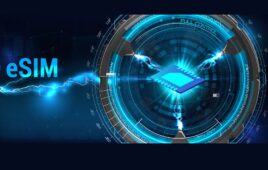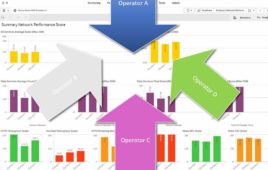AT&T executives, along with a variety of other industry voices, have previously touted the 5G opportunity for businesses, but without many details about specific services.
On Monday AT&T broadly outlined three service pillars underpinning the carrier’s approach to 5G in business, which include fixed wireless, mobile 5G, and edge computing.
“The 5G services we’re rolling out and combining with our advanced network capabilities will help businesses fundamentally change for the better,” said Mo Katibeh, CMO of AT&T Business, in a statement. “It will open up opportunities to increase revenue, reduce operational costs, and ultimately create amazing new experiences for employees and customers. Whether it’s a local startup, a growing regional company, or national enterprise, these three pillars are going to be groundbreaking.”
AT&T currently offers fixed wireless and edge computing business solutions, which are not reliant on 5G, but will be upgradable when the next-gen technology becomes available.
The carrier noted its AT&T Wireless Broadband offering will begin offering multiple speed tiers up to 50 Mbps in the coming weeks. AT&T says the service can be utilized for primary or secondary connectivity, helping businesses to, for example, set up new locations more quickly.
With edge computing, businesses can route application-specific traffic. AT&T’s Multi-access Edge Compute (MEC) offering leans on the operator’s software-defined network, enabling businesses to flexibly manage their cellular traffic through on-premise hardware and software.
With low-latency, high-bandwidth applications being processed closer to the edge, facilities could tap into new machine learning opportunities with more connected devices, according to AT&T.
AT&T recently announced a deal with Rush University Medical Center to deliver 5G focused on MEC. The carrier said healthcare facilities could process and transfer data-intensive information among devices in the exam room or to a doctor in near-real time using MEC.
Data can also be routed into a business’ cloud or remain in a private enterprise environment for enhanced security.
“Healthcare systems use a lot of networking power, and 5G is going to be a turning point in how mobile networks are used in caring for patients. Using multi-access edge compute, the possibility of robotics and increased telehealth are two aspects of healthcare that we’re planning to explore,” said Dr. Shafiq Rab, senior vice president and chief information officer, Rush University Medical Center and the Rush System for Health. “Ultimately, it’s about creating better outcomes for our patients. 5G combined with MEC will give us the foundation to provide patients better service, and increase the quality of care we provide.”
Down the line, AT&T expects to bring edge computing services to metro areas for applications like autonomous vehicles, AR/VR and drones. The carrier said it will provide additional details on edge computing services later this year.
Of course, mobile 5G is also part of AT&T’s strategy for business.
AT&T said its standards-based nationwide mobile 5G network – to be deployed in early 2020 – will enable seamless transitions between WiFi, LTE and 5G, wherever a business customer may be.
In late December, AT&T launched its mobile 5G network in select parts of 12 cities. The company is currently collaborating with businesses in those locations to develop new applications.




